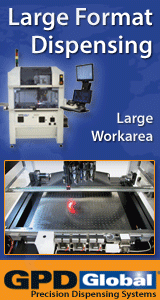Printed Circuit Board Assembly & PCB Design Forum
SMT electronics assembly manufacturing forum.
- SMTnet
- »
- Electronics Forum
- »
- ENIG vs Flash Gold
ENIG vs Flash Gold
Views: 35568
![]() I have no experience with soldering to a flash gold finish. ...
- Mar 24, 2006
by
I have no experience with soldering to a flash gold finish. ...
- Mar 24, 2006
by
![]()
![]() Flash gold is just thin gold plating over electroless nickel...
- Mar 24, 2006
by
Flash gold is just thin gold plating over electroless nickel...
- Mar 24, 2006
by
![]()
![]() We agree with Chris. If your gold is applied properly and is...
- Mar 25, 2006
by
davef
We agree with Chris. If your gold is applied properly and is...
- Mar 25, 2006
by
davef
![]()
![]()
![]() Flash gold is usually to thick and will cause embrittlement ...
- Mar 27, 2006
by
RDR
Flash gold is usually to thick and will cause embrittlement ...
- Mar 27, 2006
by
RDR
![]()
![]()
![]() Do you have experience with wear resistance of spring contac...
- Apr 20, 2006
by
Do you have experience with wear resistance of spring contac...
- Apr 20, 2006
by
![]()
![]() I've seen embrittlement %s down to 3%, but a standard 5 mil ...
- Apr 20, 2006
by
RFredericks
I've seen embrittlement %s down to 3%, but a standard 5 mil ...
- Apr 20, 2006
by
RFredericks
![]()
Hoss
- SMTnet
- »
- Electronics Forum
- »
- ENIG vs Flash Gold







